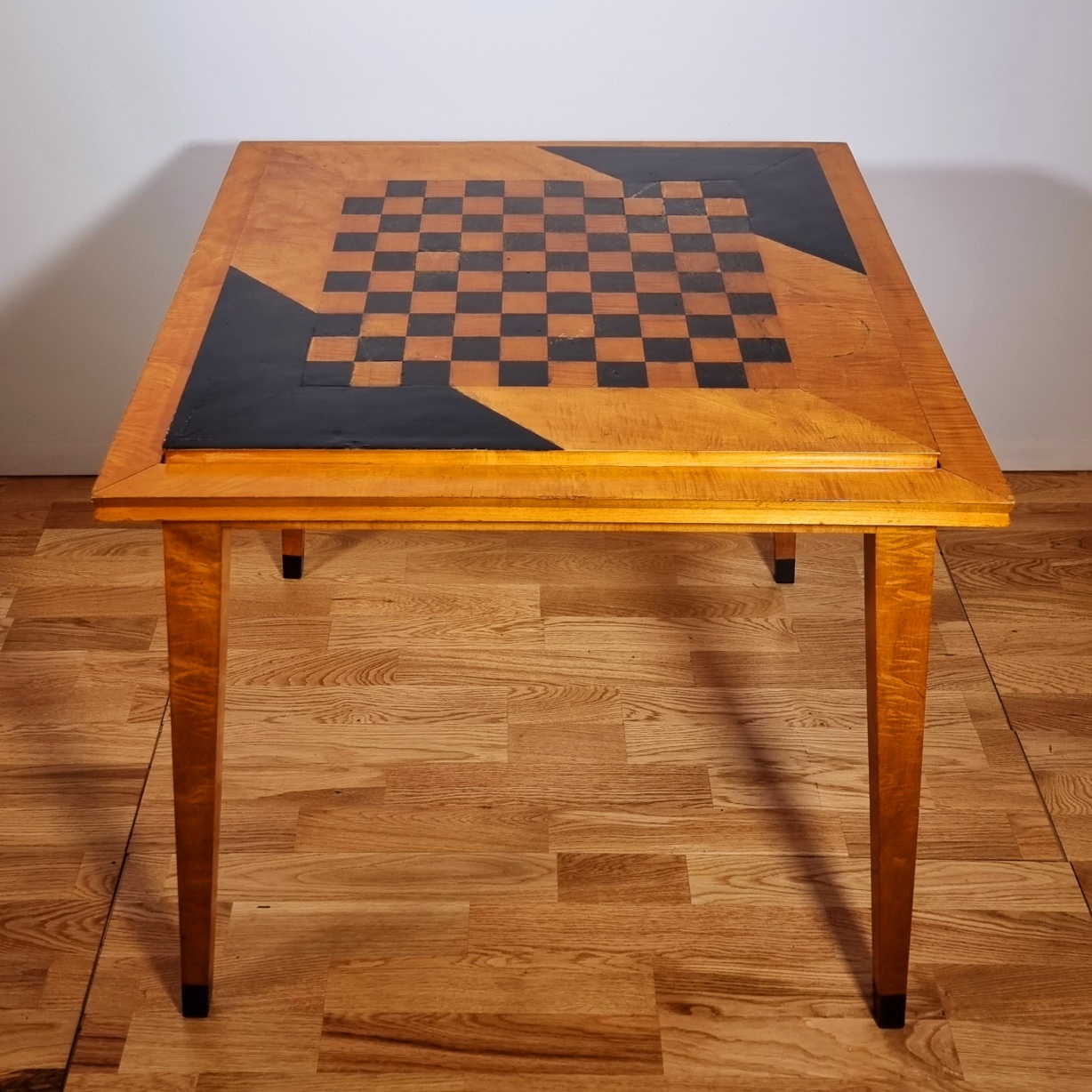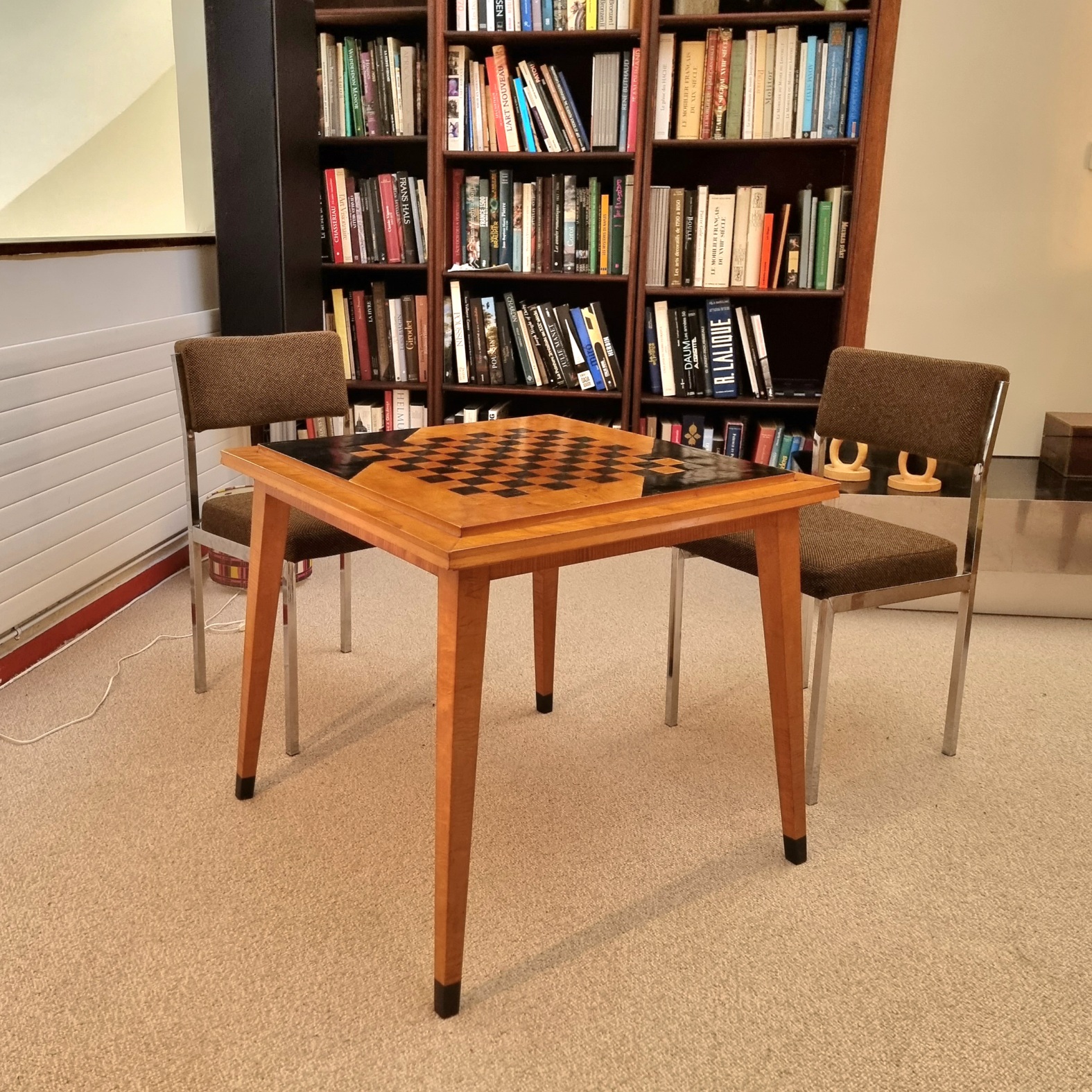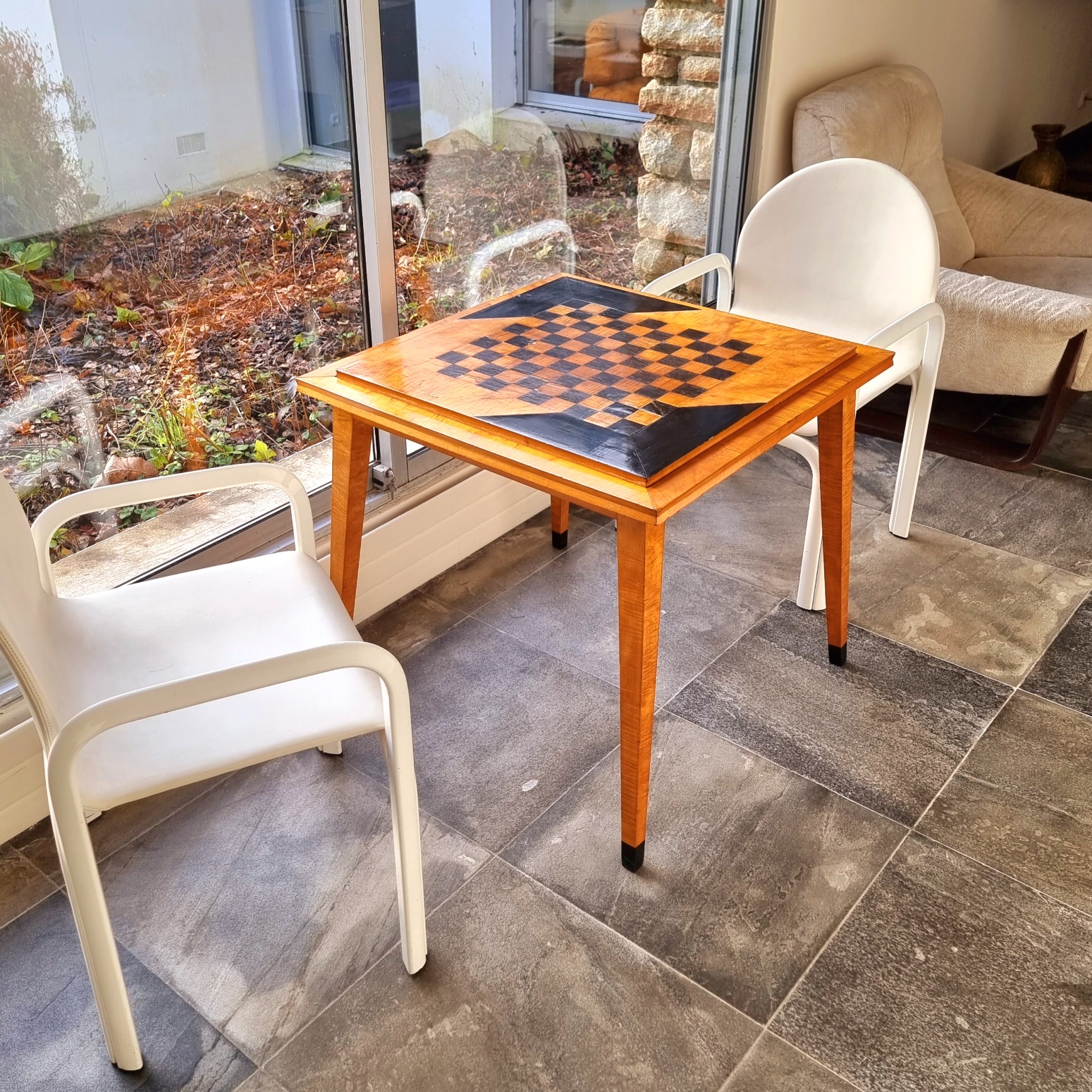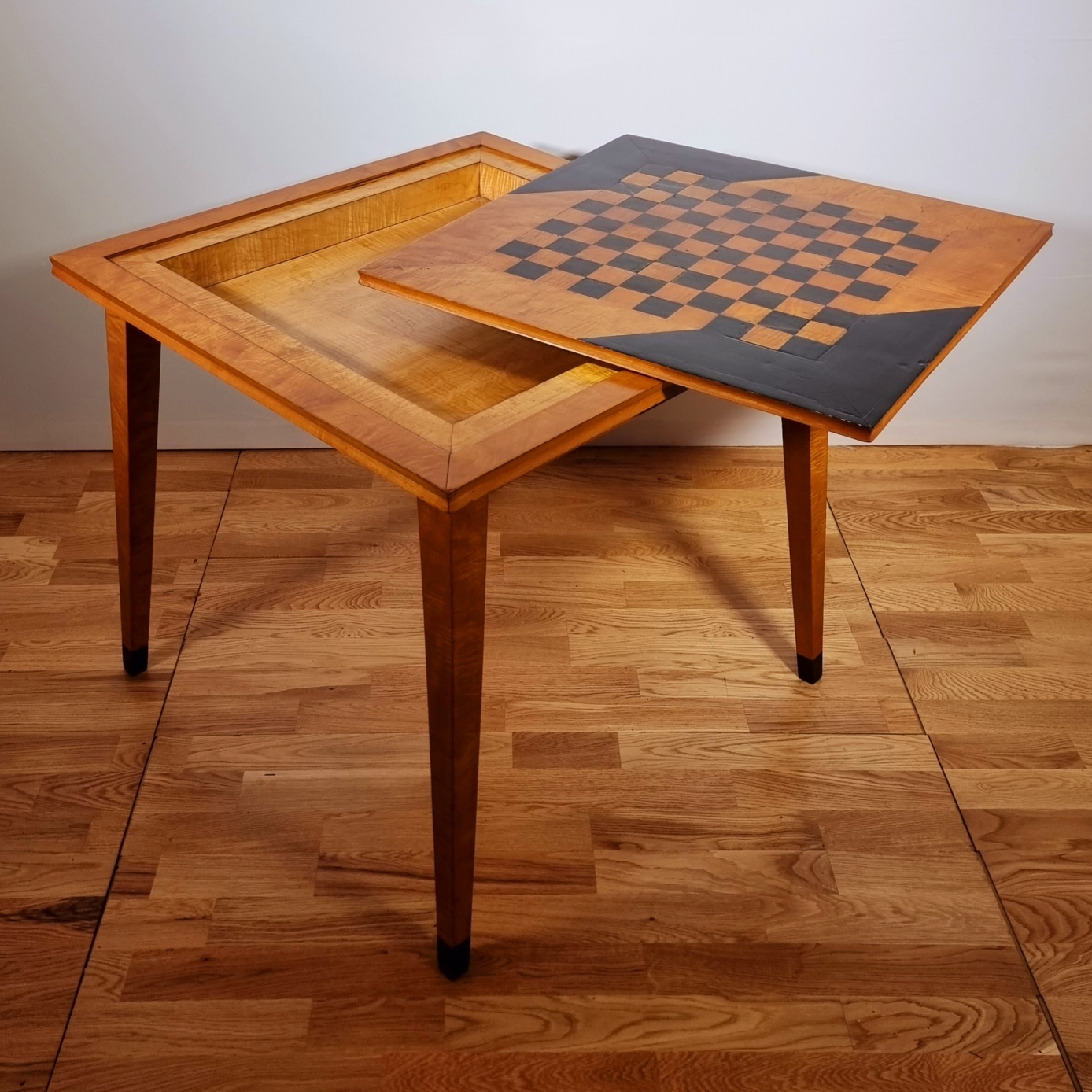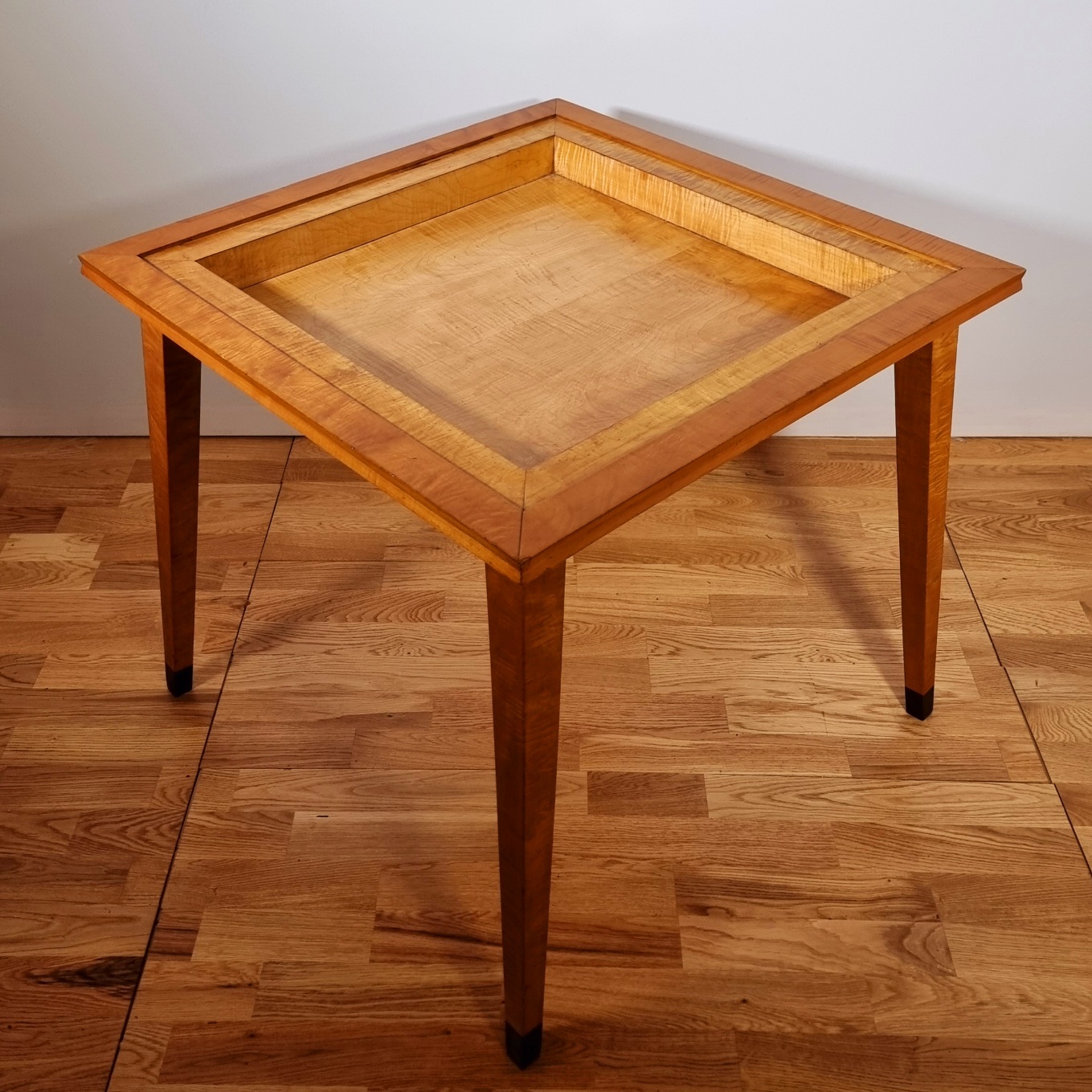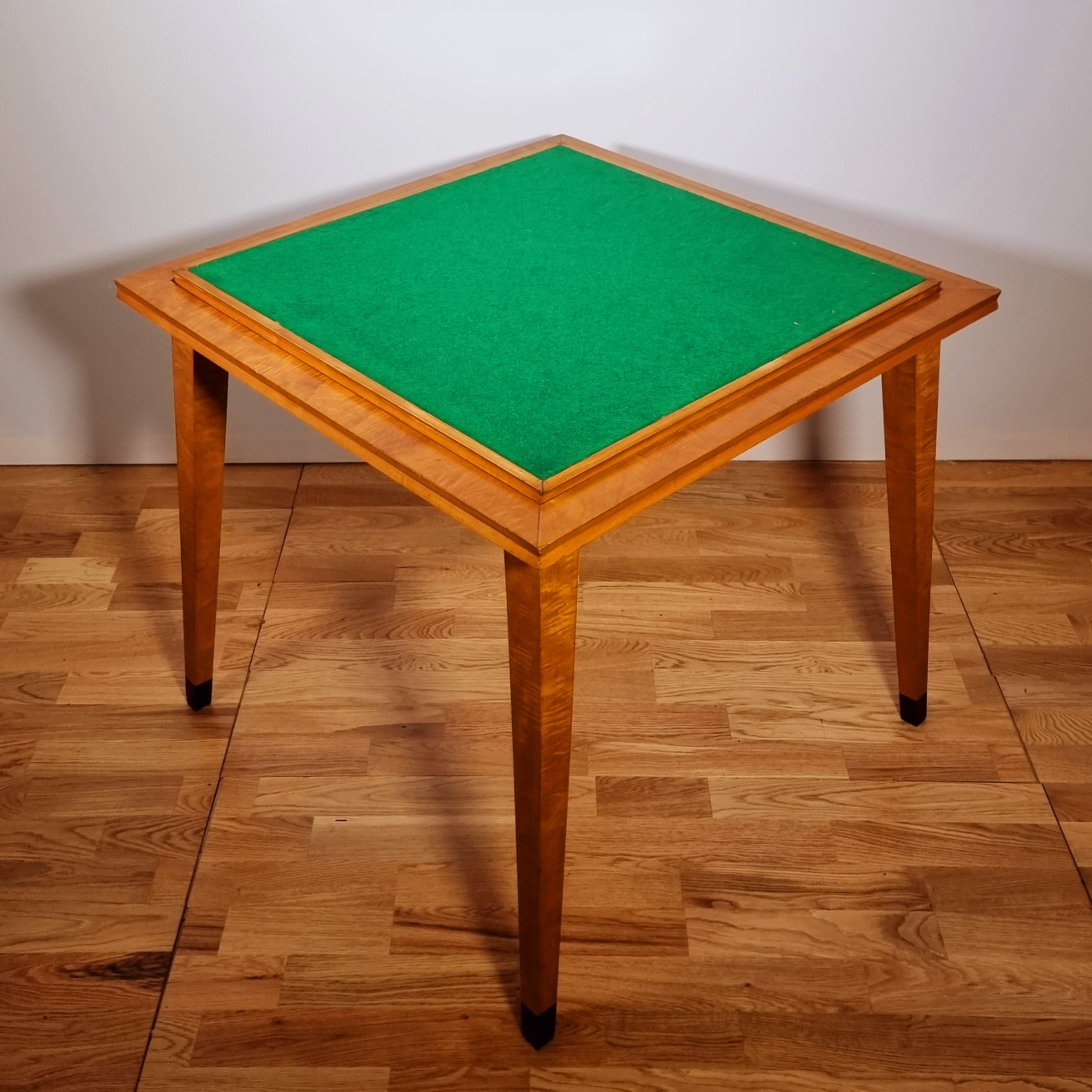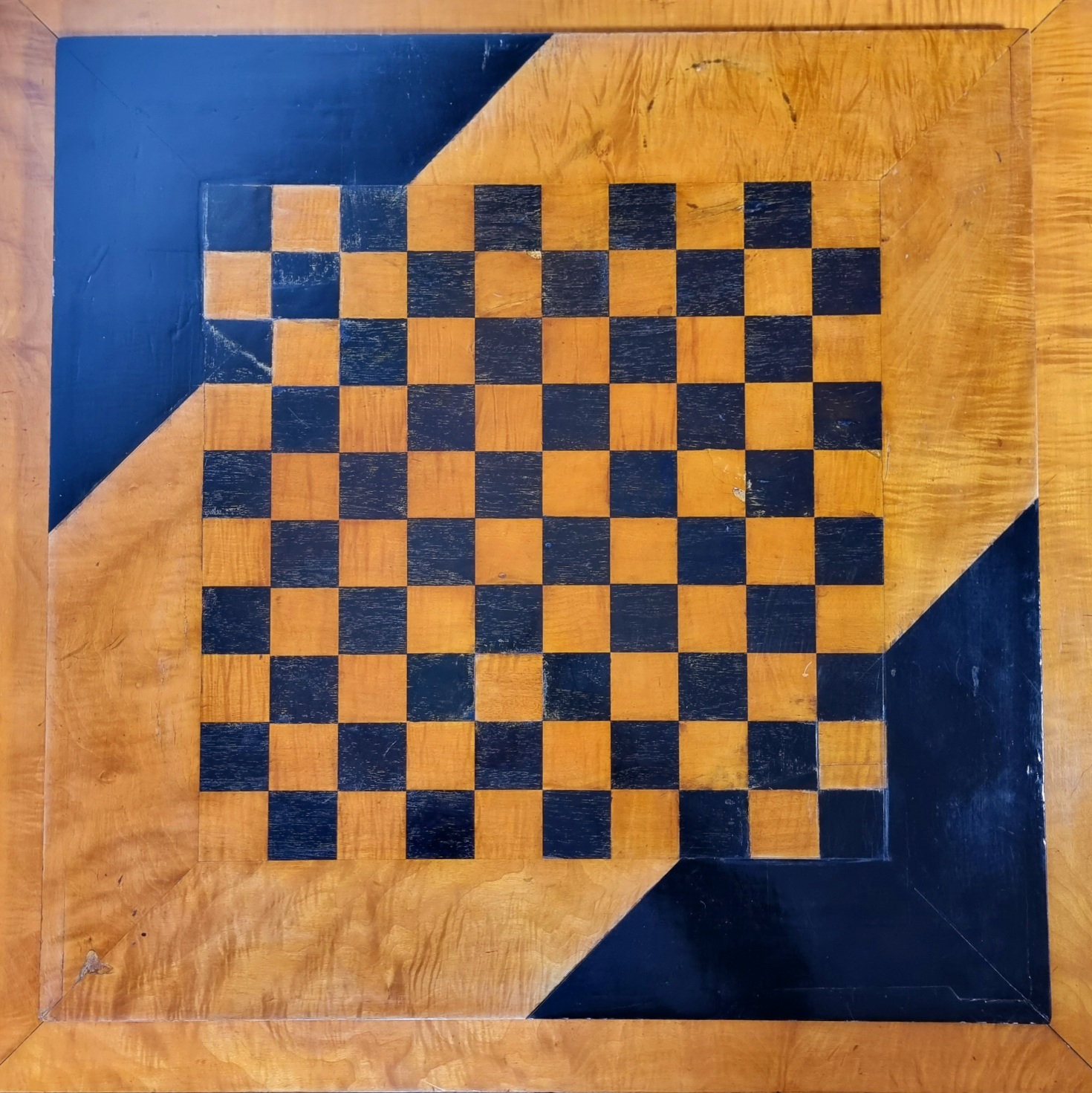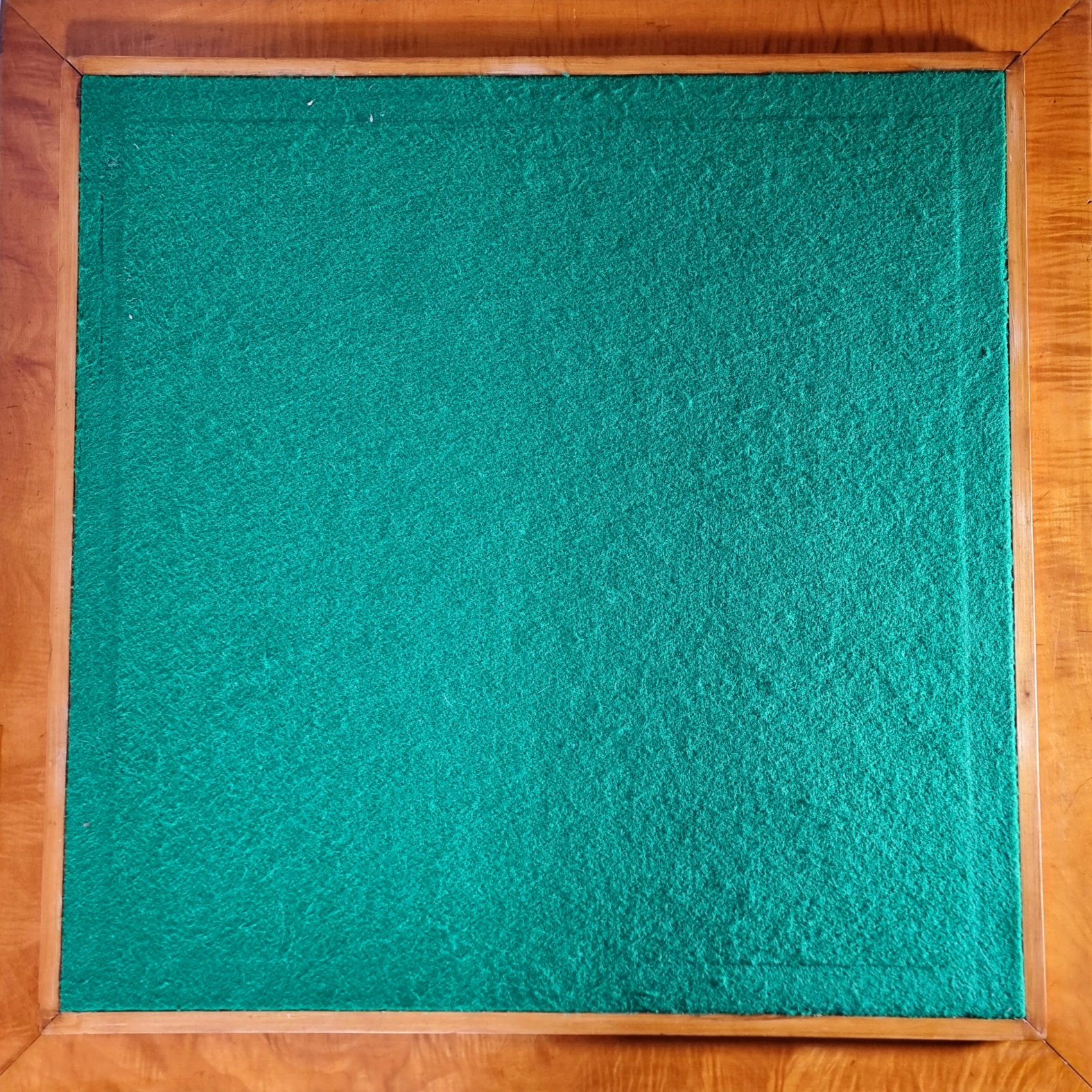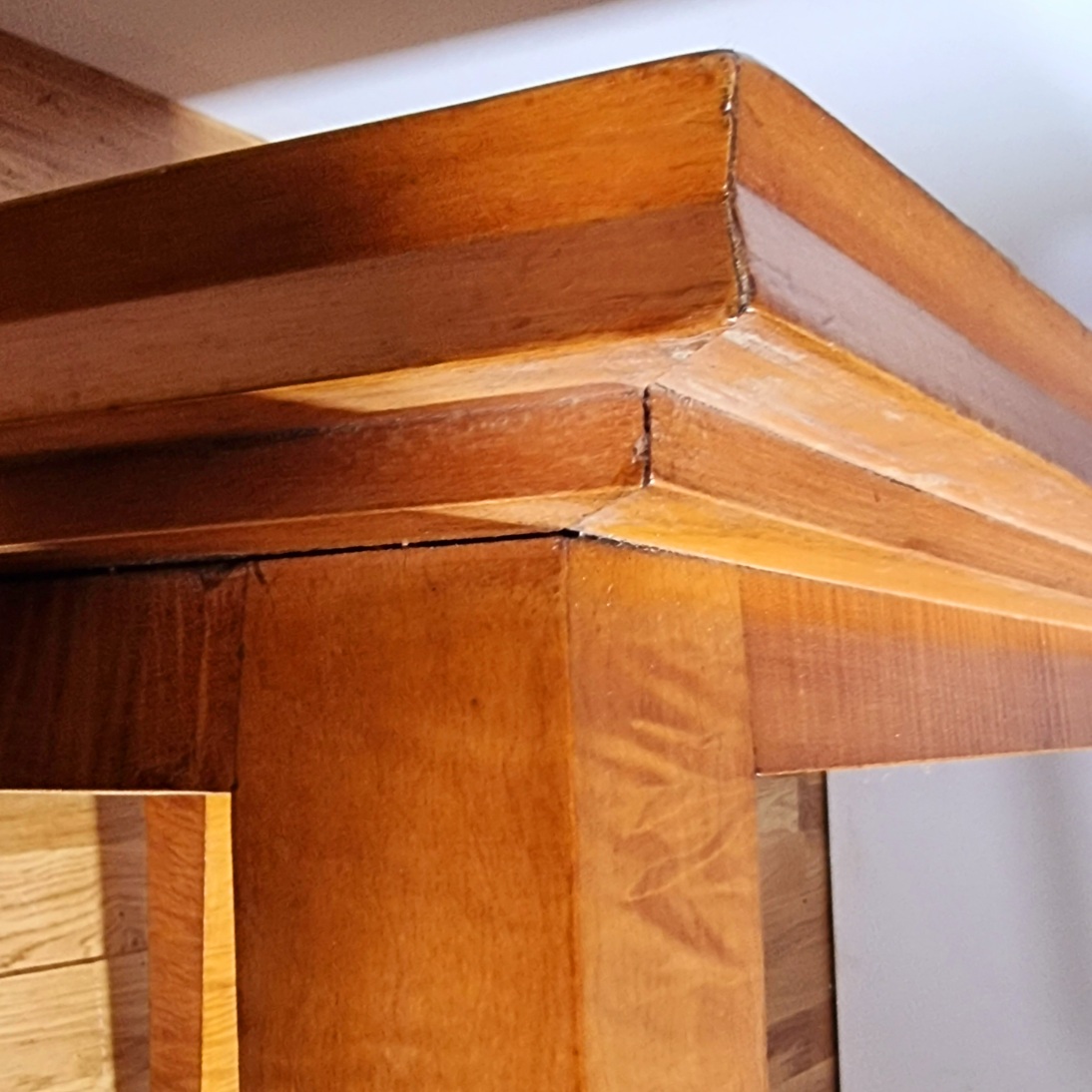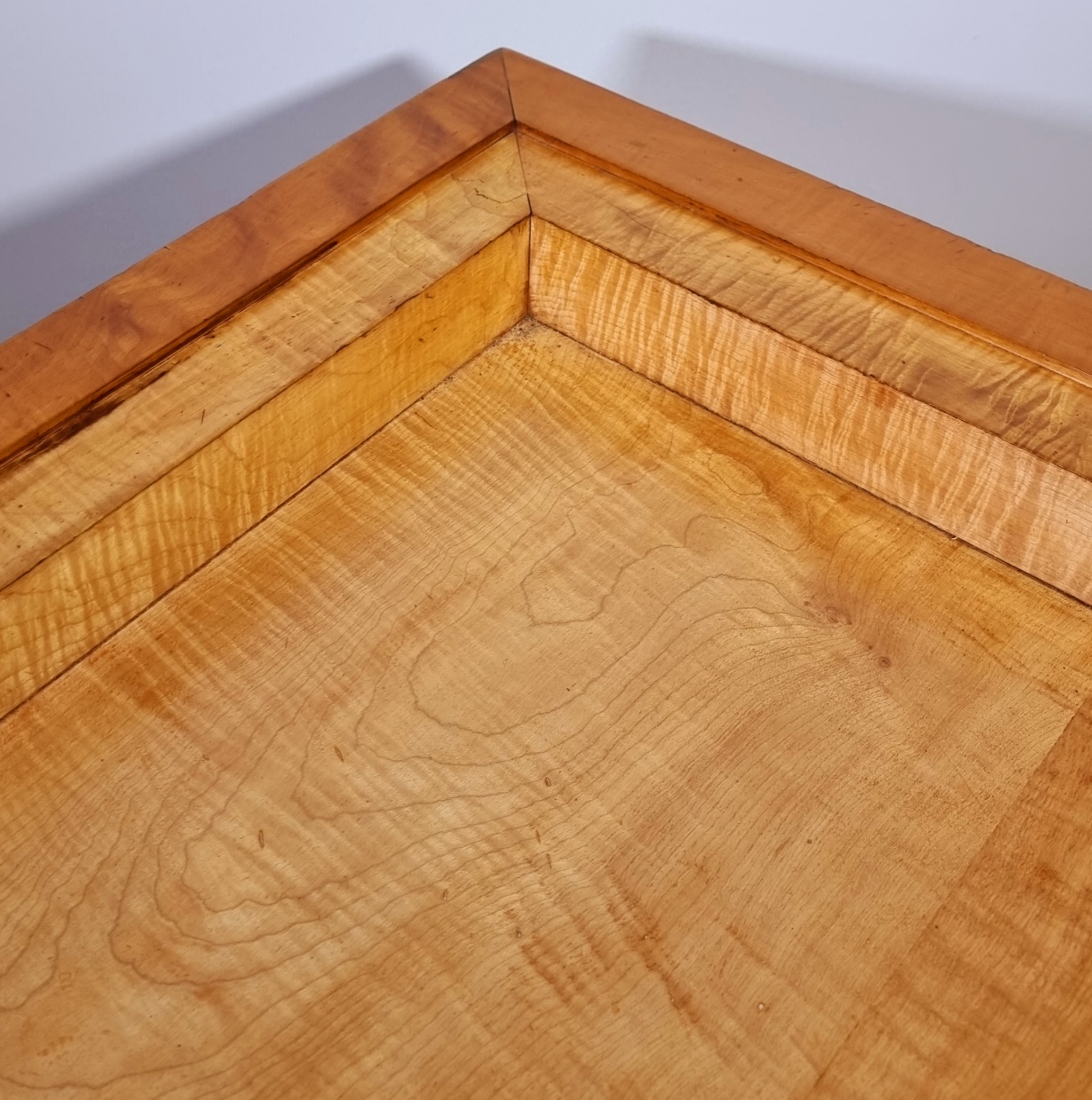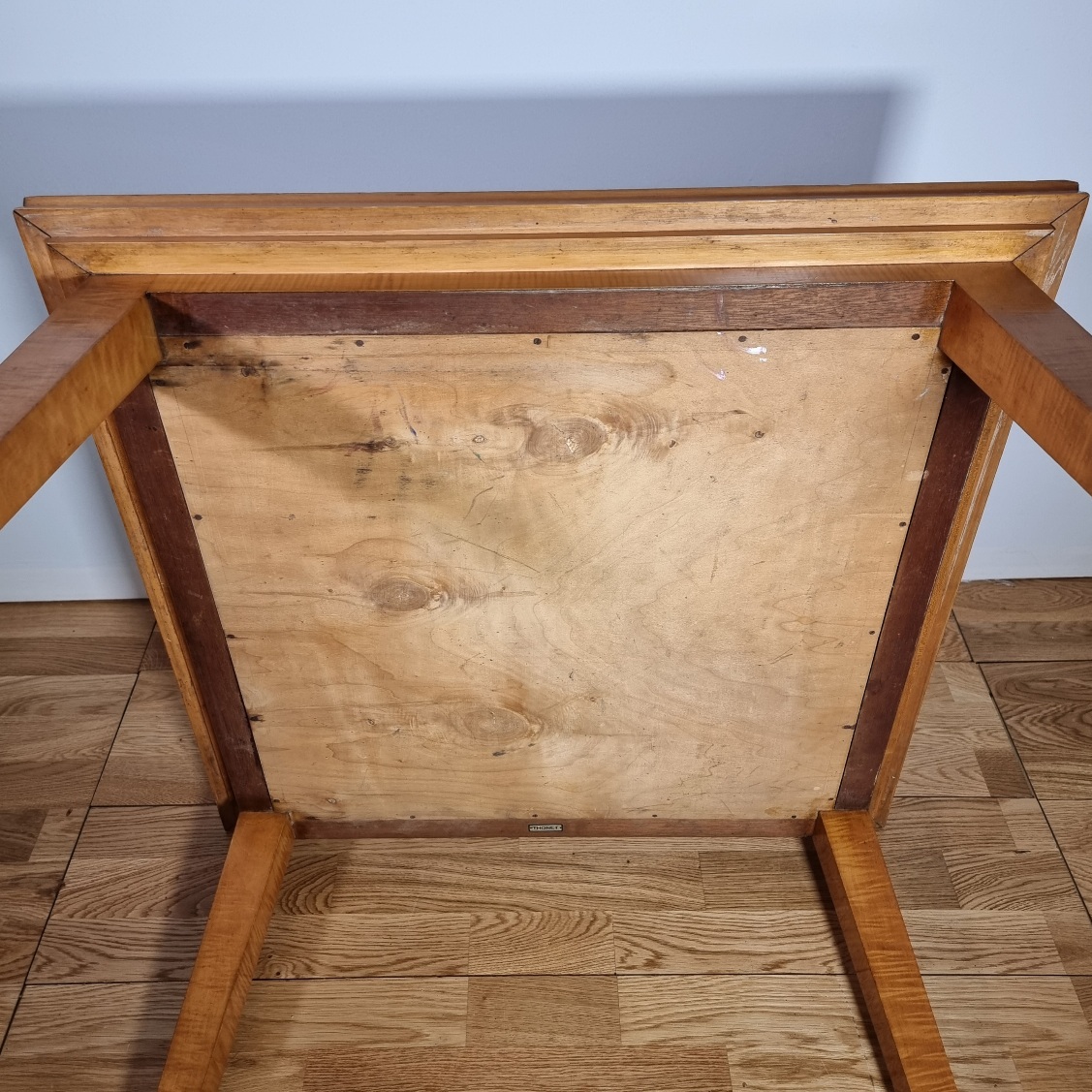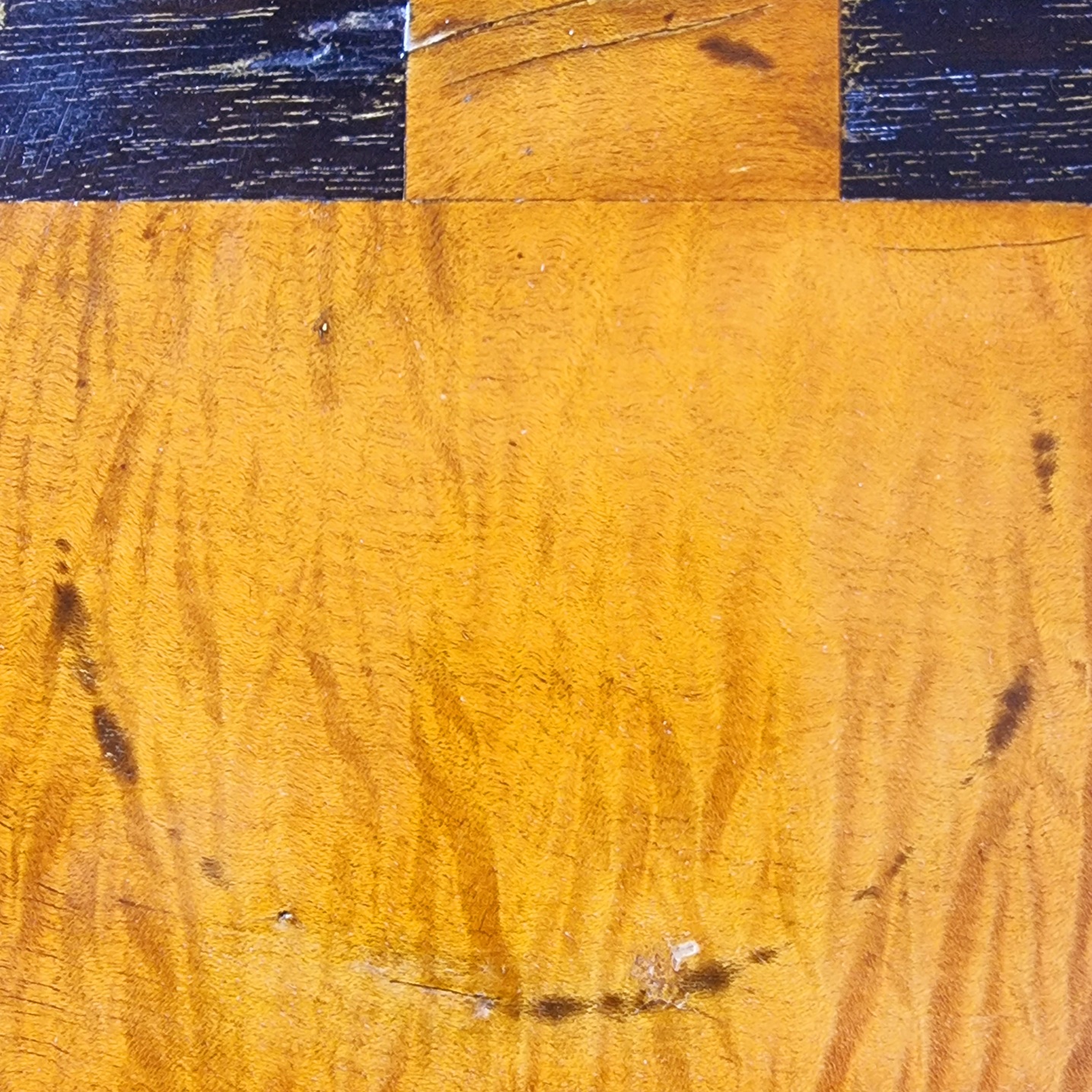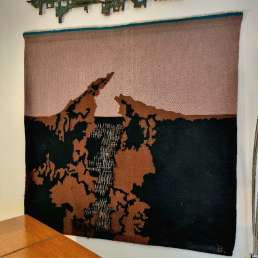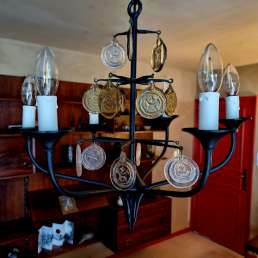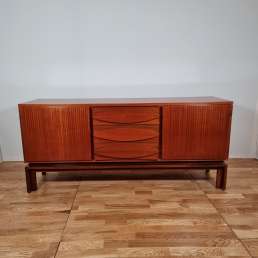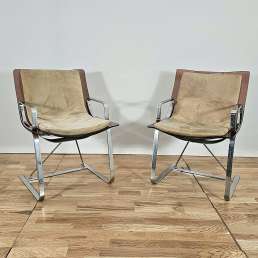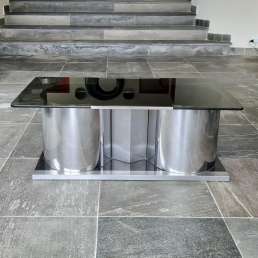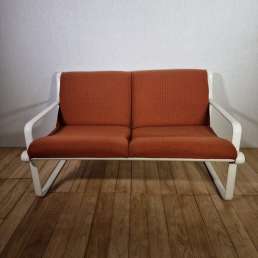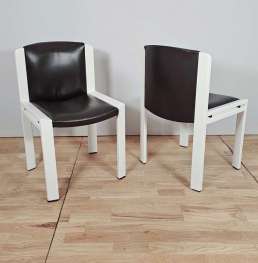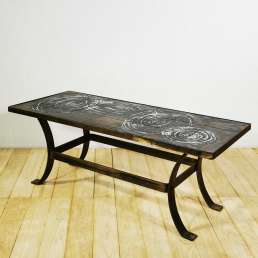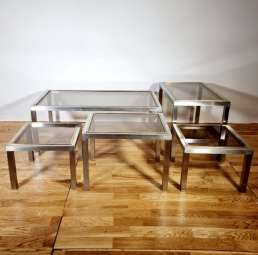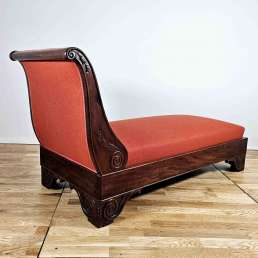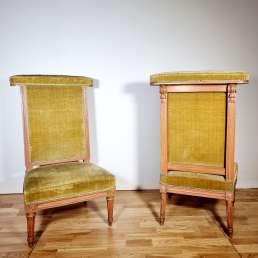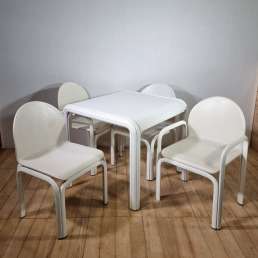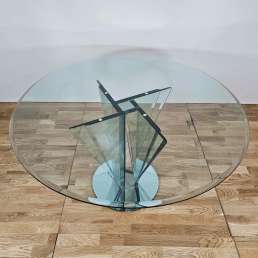Thonet sycamore game table, circa 1950
Description
What I like
I like this game table for the accuracy of its design: the oblique legs taper slightly downwards, which gives it all its chic. The movable top is slightly smaller than the table top itself, leaving a strip running which enshrines the checkerboard or the felt tray.
In contrast to the rigor of these taut lines, very typical of the Reconstruction style of the 1950s (we can think of certain pieces of furniture by René Gabriel or Marcel Gascoin, but these are often in oak), Thonet highlights creates a precious and iridescent sycamore veneer, enlivens the top with a two-tone checkerboard and breathes a modern rhythm into it by adding two brown triangles that make it swing, lacquers the tips of the feet as high and elegant clogs!
I like the practical side of this table, the other side of the top of which is dark green felt, which allows you to play cards as well as dine with friends, in small groups.
I like this modular side of this table, which can fit into many interiors, its elegance not at all flashy.
Technical description
THONET
Game table in sycamore, amaranth and blackened wood veneer, the square top accommodates a large tablet inlaid with a checkerboard between two black triangles on one side and darkened with green felt on the other; this tablet reveals a space in which to store pawns and cards; the right apron has four oblique square-section legs tapering downwards at the corners, ending in black lacquered clogs.
Thonet label under the table.
Around 1950.
Small restorations and wear, a mark of glass on the tray.
Dimensions and weight
Height: 70 cm – Width: 74,5 cm – Depth: 74,5 cm
Weight: 15 kg
Mix & Match
This game table features taut lines, enhanced by the preciousness of its golden veneer. It will obviously find its place in a contemporary interior with large low sofas, and can be used for intimate dinners.
Its precious side will play with the reflections of the brass of the tapestry of Enrique Broglia, but we can break it by associating it with the very colorful rhythm of the tapestry of Daniel de Linère “Nuit d4Espagne”.
At its side, just as refined even if they are later, the Vanessa floor lamps by Angelo Broto for Esperia, will light up memorable evenings with friends! Above this table, we can hang the amusing Scandinavian chandelier designed by Erik Höglund and Boda Glasburk for Holm Sorensen, combining, like the table, simplicity and the preciousness of the glass plates.
In the same room, I would also very well consider the elegant lounge chair and its ottoman in varnished light wood and its checkered covering, so typical of the 1950s. Unless you add the pair of G10 armchairs by Pierre Guariche!
In stock
Description
To know more
The designer
The Thonet firm often had recourse to talented designers, in particular at the time of the Viennese Secession and the Bauhaus. Few documents provide information on his collaborations in the 1950s.
The editor
Born in 1796 in Boppard am Rhein, Germany, carpenter and furniture designer Michael Thonet played a key role in the development of the modern movement through the invention of the wood bending process.
In 1819, Thonet opened his own cabinetmaking workshop. It was in the early 1840s that he began his experiments in folding and gluing wooden sticks. In 1841, he brought out the Boppard Chair, the first piece of furniture to use the bentwood technique.
In 1841, during an exhibition at the Koblenz Fair, Prince Metternich, Chancellor of Vienna, discovered Thonet’s work and convinced him to move to Vienna with his family. Between 1843 and 1846, Thonet and his sons designed a parquet floor for Carl Leistler, and furnished the Liechtenstein Palace and the Schwarzenberg Palace. In 1853, the company was renamed Gebrüder Thonet (Thonet Brothers), in honor of Thonet’s five sons, who would eventually inherit the company.
In 1859, Thonet created Chair No. 14, now known worldwide as the Viennese Coffeehouse Chair. With this design, Thonet has developed its wood bending process to adapt it to mass production. Sold over 50 million copies in 1930, the No. 14 is the best-selling chair in the world.
During the 1860s, Gebrüder Thonet opened subsidiaries across Europe. Some of the company’s classic designs include the Chair No. 04 for Café Daum (1849), the Rocking Chair No. 1 (1860), the No. 18 (1876), the widely used No. 209 (1900) by Le Corbusier in the 1920s — and Otto Wagner’s 247 (1904).
Thonet’s revolutionary designs and manufacturing processes have inspired many designers, such as Le Corbusier, Joseph Hoffmann, Adolf Loos, Marcel Breuer, Alvar Aalto, Otto Wagner and Ludwig Mies van den Rohe. His invention allowed the creation of elegant, light and curvilinear designs, anticipating the minimalist forms of modernism.
When Thonet died in 1871, Gebrüder Thonet already had branches in almost all major European cities. Today the company is known as Thonet Gmbh and is headquartered in Frankenberg, Germany. The label of our table, without specifying the place of manufacture, does not help to locate its production.
A beautiful authentic Thonet game table at a fair price
This Thonet game table has been carefully selected for its aesthetic qualities, its originality and its fair price. Our choice favors above all the acuity of the design, of which the signature of Thonet is the guarantee, guarantee of a valorization of your new acquisition in your interior and of an ability to dialogue with your furniture, to agree and to mix to create a unique decoration.
Buying vintage furniture is surely a reasonable investment, so great is the appetite for the 1950s.
Finally, buying vintage furniture preserves the resources of planet earth.


